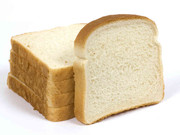
Secret Ingredients Derived of Animals, Hidden in Your Food
The restaurant and supermarket staples that actually aren’t animal-friendly
Some Australians might be surprised to find out that many of the foods they consider vegetarian or vegan are in fact, not.
Surprisingly, even some of the most inconspicuous items on our pantry shelves such as bread, cereal, wine and beer, do in fact contain animal by-products. These household staples - which to our human eyes do not contain meat, eggs or dairy - can contain a culmination of animal-based additives or alternatively use animal by-products in the creation process.
Sadly, the use of these animal derived additives and by-products are often not clearly represented on the product packaging. Some food manufacturers will even go so far as to try to hide the use of these animal components in their products in order to appeal to a wider group of consumers. Our food standards are regulated by the Food Standards Australia New Zealand body which allows religious, environmental and animal welfare labelling to be provided at the discretion of the manufacturer1. Simply put, The Food Standards Code does not legally require manufacturers to provide information to their consumers on what their food additives are made from.
This means that many of your favourite foods which you may consider vegan, or vegetarian may in fact not be so.

Common Animal-Derived Ingredients:
To help you navigate Australia’s complex labelling system, we have put together a list of common animal-derived additives and the foods you might find them hidden in:
- Bone Phosphate: Bone Phosphate is an additive made from animal bones – typically the bones of pigs and cattle. To make the Phosphate, the bones are treated with a caustic solution and hydrochloric acid solution, after which they are precipitated with lime and dried2. Bone Phosphate is used as an anti-caking agent, emulsifier and source of phosphorous in food supplements. It is also commonly used in beauty products like toothpaste3.
- Bone Char: Bone Char otherwise known as charcoal bones or “natural carbon” is essentially just ground up, charred animal bones. The bones are typically sourced from sheep and cattle. In Australia, Bone Char was historically used to refine and decolourise sugar, and most, if not all sugar refineries used bone char in their practice. Read more here.
- Carmine / Cochineal / Carminic Acid: Carmine is the name of a red food colouring that is made from Cochineal bugs. In Australia, the cochineal is used in a variety of everyday products including savoury sauces, flavoured milk, confectionary, cake, dip, desserts, ice cream and yoghurt. Read more here.
- Gelatin: Gelatin is one of the more commonly known food additives made from the collagen of animals by boiling the skin, tendons, ligaments or bones. This colourless and flavourless food ingredient is used as a stabiliser and thickener in foods such as confectionary, jelly, cakes, yoghurt, cheese and supplements.
- Isinglass: Isinglass or fish maw is a form of collagen, like the gelatine made from animals, except made from fish. The substance is taken from the swim bladders of certain fish – most commonly, sturgeons. Surprisingly, you are most likely to find Isinglass in alcoholic beverages such as beer and wine where it is used as a fining agent. Read more here.
- Chitin / Chitosan / Chitinases: Chitin is a fibre procured from the exoskeletons of lobsters, crabs and shrimp, and is commonly used in wine. The chitin is mixed into the wine barrel and is used as a stabiliser to reduce cloudiness and eliminate unpleasant tastes.
- Lanolin: Lanolin, also known as ‘wool wax’ is a waxy substance naturally secreted by sheep through their glands to protect their skin and wool from the elements. By shearing sheep and boiling their wool we can extract the lanolin. Some of the most common products containing lanolin include Vitamin D supplements, breakfast cereals as well as infant formula, margarine, milk, cheese and yoghurt8.
- L-Cysteine: L-Cysteine is an amino acid used to prolong the shelf-life of commercial food products like bread. Shockingly, L-Cysteine can be derived from animal and even human sources such as goose and duck feathers, human hair, swine bristles, and hooves. It can also be obtained from eggs and dairy products. Read on how to avoid it.
- Shellac: Shellac is a resin secreted by the female ‘lac’ bug in their native forests of India and Thailand. These secretions are collected and used in food to prevent them from drying out by forming a moisture barrier. For example, pill coatings, the wax on coffee beans, hard lolly shells, and the wax used on fruits like apples are all made from Shellac.
Bone char

In Australia, Bone Char was historically used to refine and decolourise sugar, and most, if not all sugar refineries used bone char in their practice. Today, there are some decolourising alternatives available which can be used instead of bone char, such as granular activated carbon made from organic materials such as coconut shells, coal, peat and wood. Some online sources claim that Australian sugar refineries (of which there are only four remaining) no longer use bone char in their practice, however this is not expressly mentioned on the Sugar Australia4 website.
Interestingly, approximately 85% of Australia’s raw sugar is exported to countries such as South Korea, Singapore, Japan and Indonesia where it is refined to produce white, food-grade sugar5. Unfortunately, Australian sugar companies do not provide enough transparency to rule out the use of Bone Char in their processes. And, with the cost of Bone Char being significantly less than the cost of activated carbon, it would come as no surprise to us that they would continue to utilise the cheapest alternative for their production.
Australian sugar only comprises of around 2-3% of the global market meaning that even if we can guarantee our sugar is produced without Bone Char, we can’t guarantee that the sugar used in pre-made imported products was produced the same way.
Another common use for Bone Char is in drinking water filters.
Carmine / Cochineal / Carminic Acid

Carmine is the name of a red food colouring that is made from Cochineal bugs. The bugs are mainly found in Peru and the Canary Islands where they live on prickly pear cacti. The food colouring is made by sun-drying the bugs and then crushing them to form a powder like consistency. The powder is then mixed with an acidic solution to form the bright red dye.
In Australia, the cochineal is used in a variety of everyday products including savoury sauces, flavoured milk, confectionary, cake, dip, desserts, ice cream and yoghurt.
Isinglass / Fish maw

Isinglass is a form of collagen, like the gelatine made from animals, except made from fish. The substance is taken from the swim bladders of certain fish – most commonly, sturgeons. Surprisingly, you are most likely to find Isinglass in alcoholic beverages such as beer and wine where it is used as a fining agent.
In 2008, a review of Isinglass conducted by the Food Standards Australia New Zealand found that the residual traces left over in beer and wine were so miniscule that there was no requirement to label Isinglass on the product7. Thus, you might never know if there are traces of Isinglass in your beverage or not, as they are exempt from having to tell you.
L-Cysteine
L-Cysteine is an amino acid used to prolong the shelf-life of commercial food products like bread. Shockingly, L-Cysteine can be derived from animal and even human sources such as goose and duck feathers, human hair, swine bristles, and hooves. It can also be obtained from eggs and dairy products.

How to avoid L-cysteine?

You can avoid L-Cysteine by buying fresh bread from organic local bakers and staying clear of fast-food bread chains and restaurants that serve high-preservative bread.
After reading this, you might be questioning your past food choices and thinking about your future food choices.
At FOUR PAWS we believe in a world where animals don’t suffer at the hands of humans. In order to make this vision a reality, we are striving to create more transparency about how our food is made and what is it made of.
By creating transparency, we are allowing consumers to make more informed decisions - about what we eat and the brands we choose to support.
Source
2 Ingredients 101, https://www.ingredients101.com/boneplab.htm, last accessed 17/6/22 3 Food Info, http://www.food-info.net/uk/e/e542.htm , last accessed 17/6/22 4 Sugar Australia, https://www.sugaraustralia.com.au/sugar-australia/about/industry-information/ , Last accessed 20/6/22
5 Australian Sugar Milling Council, https://asmc.com.au/policy-advocacy/trade-and-market-access/, last accessed 17/6/22
6 The Sydney Morning Herald, https://www.smh.com.au/lifestyle/the-food-that-really-bugs-us-20120525-1z9fz.html#:~:text=In%20this%20country%2C%20Food%20Standards,acid'%20or%20by%20its%20food , last accessed 17/6/22
7 ABC News, https://www.abc.net.au/news/2008-10-02/beer-and-wine-may-lose-fishy-labelling/528992 , last accessed 17/6/22
8 The New Daily, https://thenewdaily.com.au/life/wellbeing/2018/05/12/sheep-wool-grease-cereal-vegan-lanolin/ Last accessed 17/6/22
9 ABC News, https://abcnews.go.com/Health/grossest-things-food/story?id=16824388#:~:text=The%20hard%2C%20shiny%20shells%20on,and%20other%20fruits%20and%20vegetables. , last accessed 17/6/22



